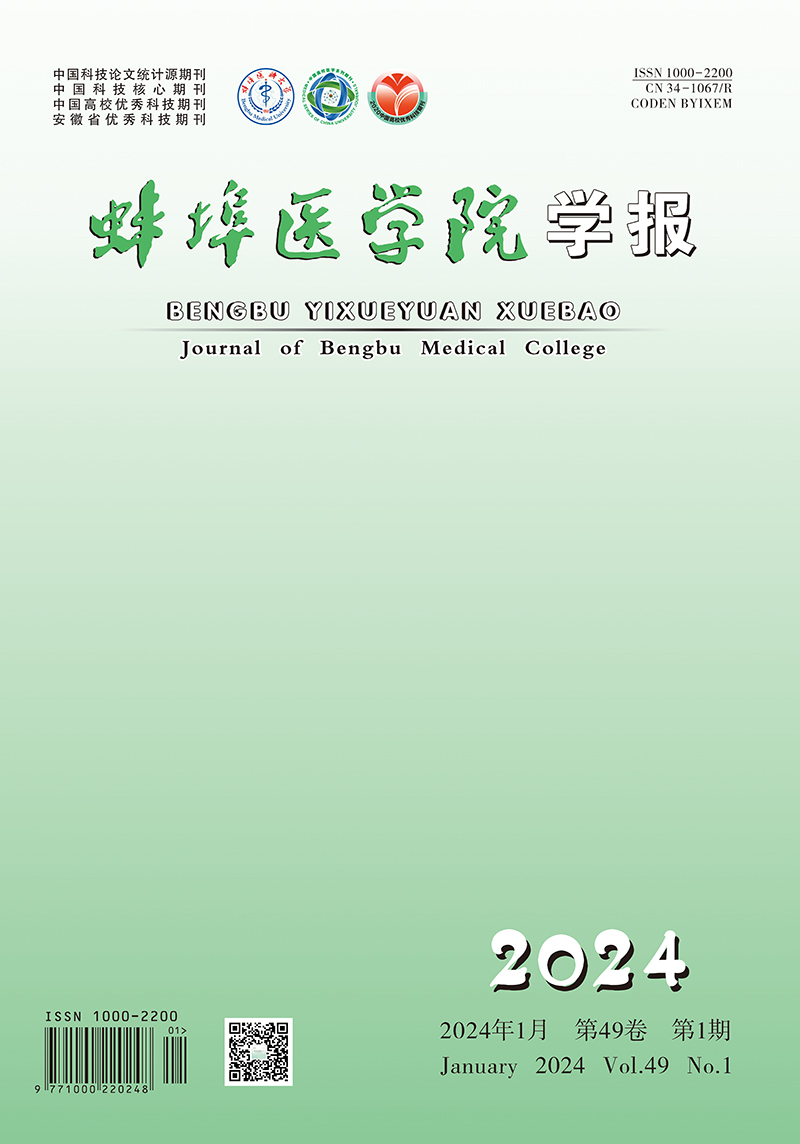-
异常的环境温度对健康的影响已成为全球性健康问题。近年流行病学证据[1-2]表明,脑卒中的发病或死亡与异常的环境温度具有一定相关性。其中,缺血性脑卒中约占所有卒中发病病例的70%,为我国经济和医疗发展带来较大压力[3]。环境温度与缺血性脑卒中发病之间的研究目前尚为数不多,且结果不一,并未充分未体现环境温度对缺血性脑卒中发病影响的滞后效应,且研究地区多集中于经济较为发达的地区[4-5]。因此,有必要探讨欠发达地区环境温度对缺血性脑卒中发病的影响。本研究旨在通过分布滞后非线性模型(distributed lag non-linear model,DLNM)评估2013-2020年山东生态队列平邑县子队列日均气温与居民缺血性脑卒中发病之间的关系,以期为气温与脑卒中发病之间的关系提供一定的理论支持。
HTML
-
从中国科学院资源环境科学与数据中心收集山东生态队列平邑县子队列2013-2020年气象资料,包括日均气温、日均相对湿度、日均气压、降水量、日照时数和风速。缺血性脑卒中(ICD10)发病数据来源于平邑县疾病预防控制中心数据库,收集信息包括2013-2020年山东生态队列平邑县子队列缺血性脑卒中病人的发病日期、性别、年龄和家庭住址等信息。共观察缺血性卒中病人50 427例,纳入缺血性脑卒中发病病人42 014例。
-
由于每天缺血性脑卒中发病人数是服从泊松分布的小概率事件,类似的研究[6]发现环境温度与中风发病率之间存在非线性关系。DLNM框架以交叉基函数为基础,同时评估暴露-反应关系的非线性和延迟影响。利用Spearman秩相关分析气象因子间的相关性控制日均相对湿度、降水量、日照时数和风速等混杂因素,相关系数r>0.8的变量不能同时包含在同一模型中,以避免共线性[5]。本研究采用类泊松(quasi-poisson)与交叉基结合的方法拟合气温与缺血性脑卒中发病人数的模型。基本模型如下:
Log[E(Yt)]=α+βTempt.l+ns(time, df)+ns(RHU, df)+ns(WIN, df)+ns(SSD, df)+ns(PRE, df)+DOW+holiday
模型的拟合度和自由度根据赤池信息准则(AIC)的评价进行选择。模型中Yt为缺血性脑卒中日发病人数;α为截距;β为Tempt.l系数;Tempt.l为日均气温与滞后时间的交叉基。基于前期研究,使用具有3个df的自然三次样条来表示相对湿度(RHT)、日照时数(SSD)、风速(WIN)以及降雨量(PRE),模型中的DOW与holiday分别为星期几效应和节假日效应。其中时间趋势变量每年的自由度为7[5, 7-8]。
研究中暴露-反应维度拟合采用自然三次样条函数,其中3个内部节点放置在气温分布的第10、75和90个百分位数;暴露-滞后维度进行拟合同样采用自然三次样条函数,滞后期选择10 d,其中3个内部节点在对数比例中以等间距的值放置[8-9],滞后效果的最大滞后时间为10 d[5, 10]。以中位数气温作为参比气温[6, 9],计算研究期间的RR和95%可信区间(CI);绘制表达气温处于不同滞后时间下对缺血性脑卒中发病影响的3D效果图。根据气温与缺血性脑卒中发病的剂量反应曲线,选取不同的滞后天数,以日均气温的P0.1、P25、P75、P99.9作为低温、较低温、较高温、高温估计其对缺血性脑卒中发病的效应。计算相应的气温对缺血性脑卒中发病影响的滞后效应值,并按照性别、年龄进行分层,分析气温对缺血性脑卒中发病的影响。
1.1. 数据采集
1.2. 统计分析
-
2013-2020年共纳入平邑子队列缺血性脑卒中发病42 014例,其中男22 023例(52.42%),女19 991例(47.58%),男/女比例约为1.1,平均每天有缺血性脑卒中发病病人14.4例(见表 1)。
变量 最小值 P25 P50 P75 最大值 x±s 总发病数 总人数 1 6 10 20 82 14.4±12.5 42 014 性别 男 0 3 5 11 43 7.5±6.9 22 023 女 0 2 5 9 43 6.8±6.2 19 991 年龄/岁 < 65 0 2 4 7 34 5.3±4.9 15 413 ≥65 0 3 6 12 50 9.1±8.2 26 601 气象变量 平均气温/℃ -12.4 5.5 16.0 23.7 32.6 14.7±10.0 — 相对湿度/% 16 50.3 63.5 75.5 99.5 62.5±16.7 — 降水量/mm 0 0 0 0.1 3 270 119.5±608.4 — 日照时数/h 0 2 6.8 9.1 13.7 5.9±3.9 — 风速/(m/s) 0.2 1.5 2.1 2.9 7.5 2.3±1.1 — -
2013-2019年平邑子队列脑卒中发病人数持续上升,2019年达到近年高峰,2020年发病人数有所下降。日平均气温的波动有明显的年周期,但未见明显的变化趋势(见图 1)。
-
日均气温与相对湿度、降水量、日照时数、风速均呈正相关关系(P < 0.05~P < 0.01),日均气温与日均气压呈负相关关系(r>0.8,P < 0.01),因此日均气压未纳入最终模型(见表 2)。
变量 日均气温 相对湿度 气压 降水量 日照时数 风速 日均气温 1.00 相对湿度 0.26** 1.00 日均气压 -0.89** -0.31** 1.00 降水量 0.19** 0.50** -0.27** 1.00 日照时数 0.23** -0.53** -0.14** -0.42** 1.00 风速 0.07** -0.09** -0.16** 0.05* 0.09 1.00 *P < 0.05,**P < 0.01 -
气温和缺血性脑卒中发病之间呈非线性关系。与中位数气温(16 ℃)相比,低温对缺血性脑卒中发病具有一定保护效应,且保护作用随滞后时间的延长而减弱;相反,高温增加缺血性脑卒中发病风险,且高温对缺血性脑卒中发病的影响具有即时效应和滞后效应(见图 2)。
-
与中位数气温相比,低温(-9 ℃)和较低温(6 ℃)在累积滞后10 d时,对于全人群的缺血性脑卒中发病都显示出保护作用。较高气温(24 ℃)与中位数气温(16 ℃)相比,滞后10 d内缺血性脑卒中的发病风险随滞后时间先增加、后降低,但其结果只有滞后时间为1 d和2 d时有统计学意义,结果分别为RR 1.107(95%CI:1.030~1.191)和1.102(95%CI:1.021~1.191)。高温明显增加缺血性脑卒中的发病风险,且有滞后效应和即刻效应,累积相对危险度(RR)在滞后0 d时达到最大,随滞后时间的增加,累积相对危险度先降低后增加(见表 3)。
累积滞后时间/d 低温(-9 ℃) 较低温(6 ℃) 较高温(24 ℃) 高温(32 ℃) RR 95%CI RR 95%CI RR 95%CI RR 95%CI 0 0.848 0.670~1.072 0.910 0.825~1.003 1.080 0.994~1.174 1.471 1.204~1.797 4 0.818 0.654~1.023 0.846 0.761~0.940 1.077 0.982~1.181 1.305 1.069~1.593 7 0.781 0.606~1.005 0.804 0.706~0.916 1.050 0.938~1.176 1.373 1.085~1.737 10 0.618 0.455~0.840 0.712 0.608~0.834 1.047 0.911~1.204 1.433 1.079~1.902 全人群较高温(24 ℃)累积滞后时间1 d时RR值为1.107(95%CI:1.030~1.191);全人群较高温(24 ℃)累积滞后时间2 d时RR值为1.102(95%CI:1.021~1.191) -
性别分层分析结果表明,较低温对于女性在累积滞后0~10 d时均为保护作用。高温与较高温对女性缺血性脑卒中发病人数有影响,滞后效应较短。与中位数气温相比,高温(32 ℃)对于女性人群的影响时间较短,只出现在高温当天,RR为1.489(95%CI:1.144~1.939)。在男性组人群中,累积滞后10 d内,随滞后时间增加,高温对缺血性脑卒中发病的累积风险先降低后逐渐增大,在0~10 d时RR为1.678(95%CI:1.193~2.361)。因此,男性人群的缺血脑卒中发病较女性更易受到高温影响。年龄分层分析结果表明,低温与较低温对于 < 65岁人群累积滞后4~10 d时均为保护作用;较低温对于≥65岁人群累积滞后0~10 d时均表现为保护效应。高温对≥65岁人群的缺血性脑卒中发病的影响发生急促,在高温当天累积风险值就达到最大,RR值为1.523(95%CI:1.203~1.928);在 < 65岁组人群中,随着累积滞后时间增加,人群发病风险先降低后逐渐增高,但其结果除滞后0 d时RR值外均无统计学意义。因此,相对于 < 65岁人群,≥65岁的人群在高温影响下缺血性脑卒中的发病风险更高(见表 4)。
累积滞后时间/d 低温(-9 ℃) 较低温(6 ℃) 较高温(24 ℃) 高温(32 ℃) RR 95%CI RR 95%CI RR 95%CI RR 95%CI 男性 0 0.910 0.685~1.210 0.962 0.855~1.083 1.027 0.929~1.136 1.454 1.144~1.847 4 0.902 0.689~1.181 0.911 0.802~1.034 1.013 0.907~1.132 1.378 1.085~1.749 7 0.820 0.605~1.113 0.887 0.759~1.038 0.967 0.844~1.107 1.478 1.114~1.961 10 0.686 0.474~0.992 0.755 0.624~0.914 1.001 0.846~1.184 1.678 1.193~2.361 女性 0 0.785 0.579~1.064 0.856 0.753~0.972 1.142 1.024~1.274 1.489 1.144~1.939 4 0.737 0.551~0.987 0.781 0.681~0.896 1.152 1.021~1.30 1.233 0.949~1.601 7 0.740 0.532~1.028 0.721 0.609~0.854 1.152 0.993~1.335 1.271 0.934~1.730 10 0.552 0.370~0.823 0.669 0.545~0.821 1.102 0.918~1.322 1.212 0.838~1.755 < 65岁 0 0.980 0.694~1.383 0.984 0.857~1.13 1.026 0.913~1.151 1.382 1.047~1.825 4 0.633 0.455~0.880 0.819 0.705~0.951 1.043 0.918~1.186 1.195 0.907~1.576 7 0.653 0.450~0.947 0.787 0.655~0.946 1.050 0.900~1.232 1.253 0.904~1.737 10 0.536 0.342~0.839 0.696 0.557~0.870 1.111 0.915~1.349 1.384 0.935~2.048 ≥65岁 0 0.782 0.598~1.022 0.869 0.775~0.974 1.115 1.010~1.230 1.523 1.203~1.928 4 0.932 0.723~1.203 0.862 0.762~0.974 1.099 0.986~1.225 1.372 1.085~1.735 7 0.856 0.642~1.143 0.813 0.699~0.946 1.050 0.919~1.199 1.446 1.095~1.908 10 0.669 0.471~0.949 0.721 0.600~0.867 1.011 0.858~1.191 1.455 1.042~2.033 女性组人群较高温(24 ℃)累积滞后时间1 d时RR为1.189(95%CI:1.082~1.307);女性组人群较高温(24 ℃)累积滞后时间2 d时RR为1.182(95%CI:1.070~1.306);女性组人群较高温(24 ℃)累积滞后时间3 d时RR为1.163(95%CI:1.044~1.295);≥65岁组较高温(24 ℃)累积滞后时间1 d时RR为1.115(95%CI:1.024~1.214)
2.1. 缺血性脑卒中病人概况
2.2. 气温和发病人数时间序列分布
2.3. 各气象因素间的Spearman相关分析
2.4. 气温对总人群缺血性脑卒中发病的影响
2.5. 不同累积滞后时间下气温对缺血性脑卒中发病的累积效应
2.6. 气温对不同性别、年龄人群缺血性脑卒中发病的影响
-
本研究基于DLNM模型与2013-2020年山东生态队列平邑子队列42 014例脑卒中发病病人的数据,按总人群、性别和年龄组对脑卒中发病风险进行了最新评估。结果表明,高温暴露与缺血性脑卒中发病风险的增加显著相关,二者存在非线性关系,并且高温对缺血性脑卒中发病的影响存在着显著的即刻效应和滞后效应。以往研究[10-11]表明高温对缺血性脑卒中发病影响迅速,但并未充分体现其滞后效应,与本研究结果有所不同。
目前国内外大多数研究都集中于日均气温与脑卒中死亡率的关系。张云权等[12]研究表明,高温对脑卒中死亡效应则发生急促,持续时间较短,高温累积滞后0~2 d合并风险RR为1.114(95%CI:1.012~1.227)。PHUNG等[13]使用Meta分析合并以往研究,结果表明,寒冷和炎热的气温都与中风死亡风险的增加有关。李永红等[14]研究发现,极端高温和极端低温对脑血管病死亡的累积风险分别为2.08(95%CI: 1.49~2.90)和4.61(95%CI: 1.85~11.5)。此外,很少有研究探讨气温对脑卒中发病的影响。其中,洪斌等[15]研究表明,安徽巢湖地区缺血性脑卒中在夏季及秋季发病较多,夏季天气炎热,居民缺血性脑卒中发病率较高。LI等[5]研究发现,深圳地区高温对于缺血性脑卒中发病的即刻热效应显著,低温对于男性组人群有微弱的保护效应。然而德国一项研究[4]却表明,环境温度的迅速下降会使中风发病的风险逐渐升高。本研究发现,高温对缺血性脑卒中发病的影响存在即刻效应和明显的滞后效应,低温对全人群缺血性脑卒中发病的影响在特定累积时段呈现出一定的保护作用。在目前的研究中,我们观察到不同城市的分析之间存在一些差异,这些差异可能部分归因于研究地点的特点,如气候条件、地理特性、人口脆弱性和住房类型等。
本研究进一步按性别、年龄进行分层分析。研究发现,在高温环境下,滞后2~10 d内,滞后时间越长,缺血性脑卒中的发病率越高,特别是在老年组(≥65岁)和男性组中。这一发现与VODONOS等[16]研究结果相近,但其研究并未展示出高温对缺血性脑卒中影响的滞后效应。有研究[17]表明,较长的滞后期可能反映了当地人口对炎热条件的适应,这可能导致需要更长时间的热应激来触发生理反应。虽然高温与缺血性脑卒中风险之间的联系机制尚不完全清楚,但据推测,一方面当暴露在高温环境下时,身体需要通过提高心率、血管扩张和出汗等体温调节手段增加热量扩散,因此,对大脑的血液供应可能会减少,现有的缺血可能会加重;另一方面,高温可能使人体失水和脱水使血液浓缩和黏稠度增高,从而导致血栓栓塞,增加缺血性脑卒中发作的风险[5, 17-18]。关于各年龄段的争议结果,大多数现有研究[8, 19]显示,老年人似乎比年轻人更容易受到影响。有研究[18]显示,就缺血性脑卒中而言,老年人在高温下比年轻人更容易发病,这可能是因为老年人经常患有慢性和退化性疾病,他们的生理功能随着年龄的增长而下降。在性别差异方面的解释为男女对热应激的生理反应不同,如性激素、体温调节能力、免疫力等[5]。此外,男性体力劳动相对较多、劳动强度和精神压力相对较大,以及吸烟、饮酒和高脂饮食等一些不受控制的生活和社会条件,都可能导致男性发病风险高于女性[6, 18]。
本研究存在一定局限性,首先,山东生态队列平邑县子队列所属地区地质构造复杂有明显的山区特征,山区面积占85%,其气候条件、地理特性独特,因此研究结果无法代表大部分地区。其次,有研究[20]称空气污染属于中介变量而非混杂因素,因此未将空气污染资料纳入混杂。气象数据是从固定的监测点提取的,而不是从单个的暴露中获取的,暴露量测量误差难以避免。第三,缺血性脑卒中分类按照ICD10进行,可能不完全准确,可能出现编码错误,导致错误分类和信息偏差,特别是病人有多个亚型的脑卒中。因此,未来的研究还需要进一步研究环境温度对不同经济和气候地区缺血性脑卒中发病的影响,同时纳入更多的协变量,更加全面地分析不同因素对缺血性脑卒中发病的影响。









 DownLoad:
DownLoad:
